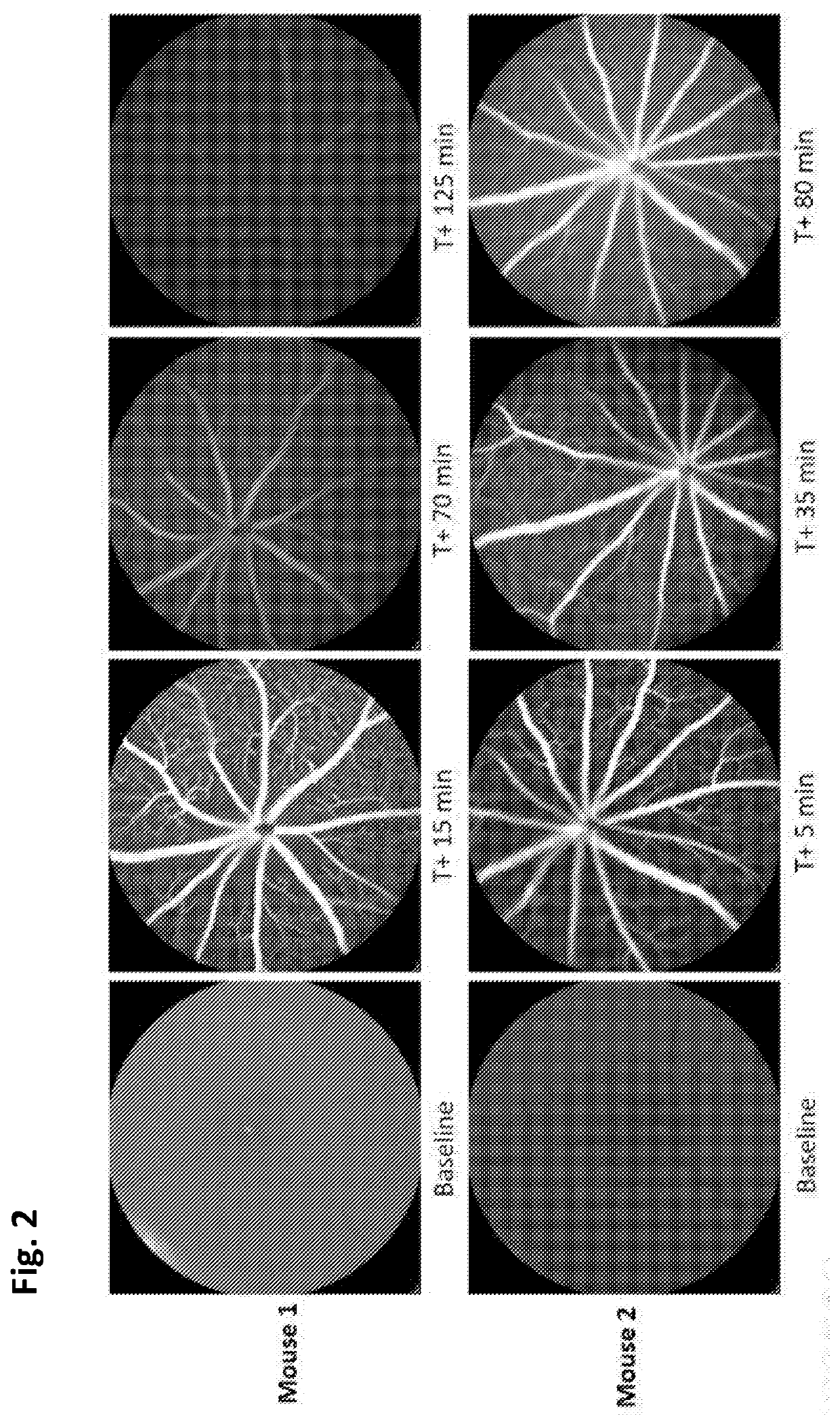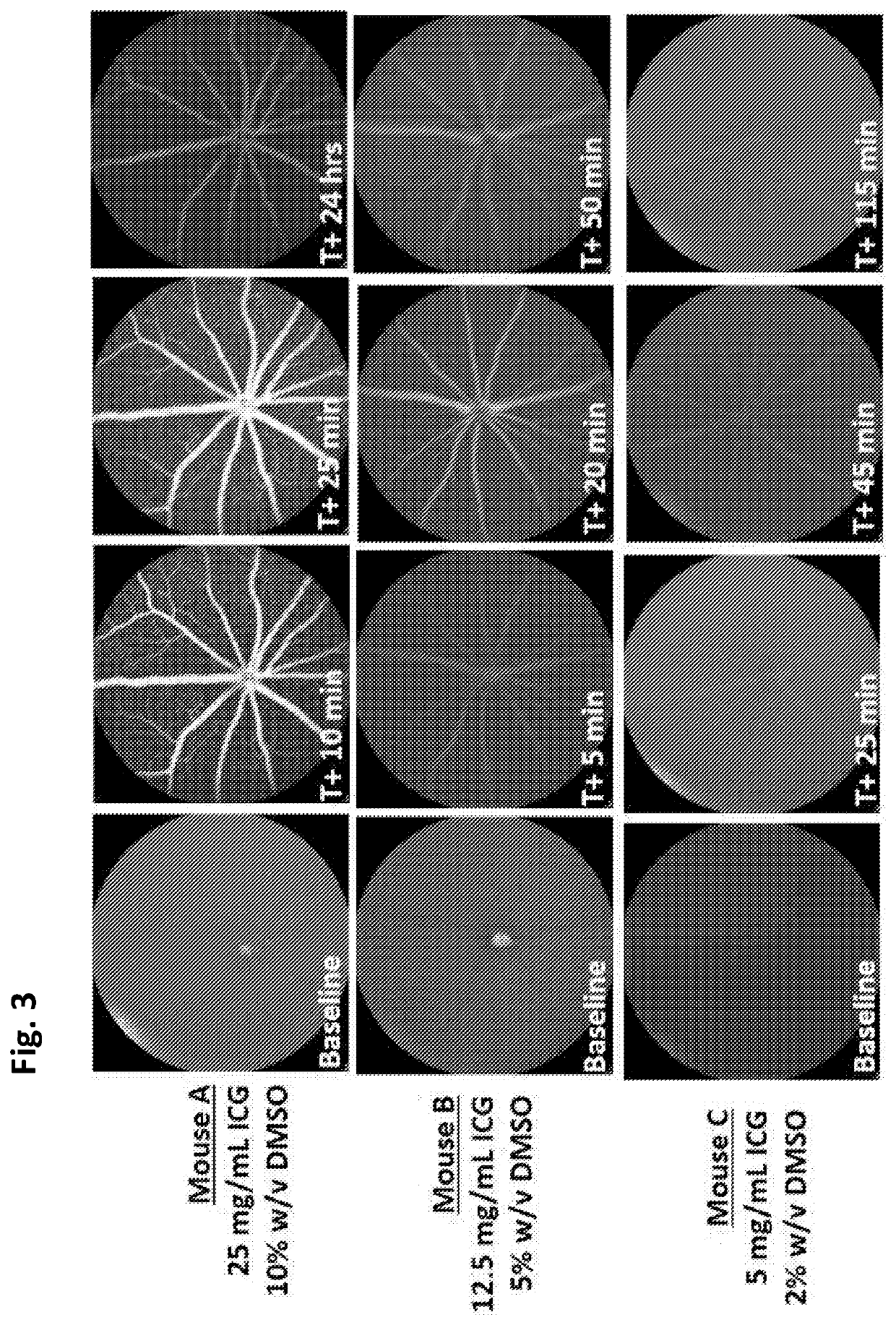Intranasal Delivery of Fluorescent Marker
a fluorescent marker and intranasal delivery technology, applied in the field of fluorescence markers, can solve the problem that patients are not routinely evaluated, and achieve the effect of rapid accumulation of fluorescen
- Summary
- Abstract
- Description
- Claims
- Application Information
AI Technical Summary
Benefits of technology
Problems solved by technology
Method used
Image
Examples
Embodiment Construction
lass="d_n">[0037]a) Anx776 Rapidly Reaches the Circulation and Retina After Intranasal Administration
[0038]Annexin 128 was conjugated to Dy-776 in its maleimide form, providing a marker of retinal cell integrity identified as Anx776. The formulation of Anx776 presently used in the clinic (0.2 mg / mL) was concentrated 25 times to 5 mg / mL using a 5 kDa MWCO filter, within a buffer containing 20 mM Sodium Citrate, 280 mM Dextrose, pH 6.2 in water for injection.
[0039]Concentrated Anx776 (hiAnx776) was tested in vivo. hiAnx776 was administered intranasally (25 μL) to C57BL / 6J mice at the same time as intravitreal 4% DMSO (1 μL injection volume, PBS buffer) was injected to induce retinal cell apoptosis, using a well-established model[6]. FIG. 1[A-B] illustrate representative cSLO images of naïve (FIG. 1A) and DMSO-insulted (FIG. 1B) retina at baseline, before treatment. These same eyes are imaged 3 hours after treatment with 4% DMSO injection (FIG. 1D) and intranasal Anx776 (FIG. 1C and FI...
PUM
| Property | Measurement | Unit |
|---|---|---|
| molecular weight | aaaaa | aaaaa |
| emission wavelength | aaaaa | aaaaa |
| concentration | aaaaa | aaaaa |
Abstract
Description
Claims
Application Information
 Login to View More
Login to View More - R&D
- Intellectual Property
- Life Sciences
- Materials
- Tech Scout
- Unparalleled Data Quality
- Higher Quality Content
- 60% Fewer Hallucinations
Browse by: Latest US Patents, China's latest patents, Technical Efficacy Thesaurus, Application Domain, Technology Topic, Popular Technical Reports.
© 2025 PatSnap. All rights reserved.Legal|Privacy policy|Modern Slavery Act Transparency Statement|Sitemap|About US| Contact US: help@patsnap.com



